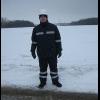|
|

Dew Point Unit For Water Remove And Lpg Extractio From Gas - This Is T
#1

Posted 21 January 2016 - 12:04 AM
I want to know your advice before going to design and manufacturing company of Dew point unit equipment for natural gas dehydration and remove HC.
We want to install Dew Point Unit for the 2 reason's:
1. Our natural export gas do not meet Water and HC Dew point specifications on current facility. We want to install Dew Point Unit in the nearest 1 years.
2. We want to extract LPG from natural gas in the nearest 2-3 years.
Based on calculations to meet Water and HC Dew point temperatures we need to cool natural gas from +40 C on inlet to -15 C on outlet at pressure 50 bar.
To extract LPG from our gas we need to cool gas to the -35 C ...-38 C.
My question are:
1. Do we need to size Dew Point Unit for the both cases? It means that first 2 years we will use it for cool gas just to -15 C (I assume it is about 50% of propane compressor capacity), and after we built NGL fractionation unit we can cool gas till required -35 C to extract LPG.(100% of propane compressor capacity)
2. We can install 1-st Dew point unit for cool gas to -15 C.
After we decided to extract LPG we can install 2-nd Dew Point Unit with more cooling effect to cool gas to -35 C downstream of the 1-st. Unit.
In the first case I suppose capital cost will be high since 1 unit should have capacity to cool gas from +40 to -35 C.
And if we have low gas flow rate it will be expensive to use such powerful compressor with small refrigeration capacity.
In the second case capital cost will be devided for the two phases and as for me this is the better solution and gives more manipulatuons in the small gas flow rates.
Please let me know your opinion
Thanks,
Dmytro
#2

Posted 21 January 2016 - 02:57 PM
This all depends on your pressure, composition, and GPM (gallons of C3+ per MSCF).
If your pressure is high enough and GPM low enough, you would not need a refrigeration unit to reduce the temperature. If that is the case and your composition is propane rich, you may only need one column with no external energy source. You can simply change your reboiler split for when you want to start your recovery of LPG.
If you have a significant amount of C4+, you will need to add a depropanizer to get your LPG. Your bottoms in that column would be natural gasoline (also valuable).
It is most likely that you will need a mole sieve to remove the water in all cases.
#3

Posted 22 January 2016 - 12:32 AM
Our gas is rich with C3/C4, also we have good C5+.
The pressure on plant is 45 bar.
Gas flow is 55 MMSCFD.
Below is gas composition in mole %:
N2 - 0.255
CO2 - 4.937
C1 - 82.807
C2 - 8.177
C3 - 2.483
iC4 - 0.319
nC4 - 0.929
neoC5 - 0.007
iC5 - 0.143
nC5 - 0.111
C6+ - 0.287
For the now we are not going to to extract LPG, just we need Dew Point Unit to meet Water and HC specs.
So my main question is about do we need two Refrigeration units (one to cool gas to -15 C to meets water and HC specs and second to extract more LPG with cooling gas to -38 C)
Or we need one big Refrigeration unit with cooling capacity to -38 C.
I understand that design and manufacture company will send two quotes for my request but I want to be sure exactly what is the better option.
As for me I personally prefer to install two Units, may be it will be more expensive but will give more flexible work of our plant, like if we stop fractionation unit we can easy stop and secong Refrigeration unit will continue to produce gas.
If we install One big Refrigeration unit it should have a big Refrigeration capacity and if we operate at small gas flow rates without extraction LPG (chellir temperature is -15) our compressors will work at low load so we need to be sure that they can handle it
Looking forward for your comments
My question is why we need to remove water using Adsorption - Molecular Sieve, as you mentioned. Standard Dew Point Units can easy remove water using cooling go -15 and MEG with next regeneration.
Even with future gas coolig till -38 to extract we still do not need Molecular Sieve Dryers.
Regards,
#4

Posted 22 January 2016 - 10:49 AM
As RockDock states, if you have a high pressure feed and can accept a fairly significant pressure drop, you could potentially achieve the dewpoint control and LPG recovery you state via J-T expansion. Looking at your inlet pressure of 45 bar however, I expect this is not the case if you are sending the residue gas to a pipeline (unless you install a compression unit which is expensive). The temperatures for the two phases are certainly within the realm of a standard mechanical refrigeration unit unit with MEG injection & regeneration, and it could be designed in a staged fashion for the two operating cases you describe. Unless you plan to go to deep cut (cryogenic) processing (eg. lower than -40C) in the future, you will not need molecular sieve dehydration.
We design and fabricate modular CO2 & H2S removal units, TEG Dehydration, Dewpoint control & LPG recovery units, fractionation , etc. so we may be able to help you out.
Cheers,
#5

Posted 22 January 2016 - 11:10 AM
You need a mole sieve because your hydrates begin to form at about -20C with about 1 lb H2O/MMSCF. Your water dew point would be -26 C.
I think I understand what you mean about "dew point unit". In my mind this can mean several things. I believe you are describing a chiller system in which you do not take advantage of the JT effect. I am discussing a system which has a turbo expander and a JT valve. The system I am describing can easily switch to C3 recovery based on your feed split to the reboiler. It also requires no C3 refrigeration. The only operating cost would be an optional compressor if you need the sales gas above 20 bar. You will have a larger CAPEX with a turbo expander plant, but it has very little OPEX and is very versatile.
#6

Posted 22 January 2016 - 12:29 PM
If you have MEG injection that will protect against hydrate formation, no mole sieve required, we typically design dewpoint control/low grade LPG recovery units with LTS temperatures of -30 to -35C with MEG injection to inhibit hydrate formation and remove water, thus meeting both water and HC dewpoints. We have also used Methanol injection and regeneration if the LTS temperature is between -40 and -65°C for hydrate inihibition/water dewpoint control.
As RockDock states, there are several different options for the LPG recovery that can be investigated depending on sales gas pressure requirements and % C3+ recovery. desired.
#7

Posted 22 January 2016 - 11:25 PM
ColinR33:
Hello and thanks for your comments.
The pressure 50 bar is the minimum Gas plant pressure since we export natural gas in trunk pipeline with operating pressure 40 - 45 bar. We have normal pressure drop 5 - 10 bar between Gas plant and trunk pipeline.
In future when WHFP will drop we install Gas compressor upstream of Dew Point Units so in any case we will provide 50 bar as operating pressure.
After installation of Gas compressors temperature of Gas going to Dew Point Units will be higher about +45 deg. C, so Units should be sized for maximum gas temperature +45 deg.C.
Now regarding Dew Point and LPG Units:
This will be propane Refrigeration unit with propane loop.
Molecular sieve Driers + Turboexpander is very expensive I suppose.
To avoid hydrates formation we will use MEG (80%by weight).
MEG regeneration unit also will be used.
I had before MEG regeneration Units on another gas plant, it works well. But I do not have experience with Methanol regeneration Units. And most of Dew point Units use MEG. May be because MEG easy to regenerate due to higher boiling point and it is not so toxic as Methanol.
For the first time (when we do not will extract LPG) we will keep temperature in chiller at - 15 deg. C. and 50 bar.
After few years when we decide to extract LPG we will keep temperature in chiller at - 35 ...-38 deg. C.
And we will need Deethanazer and Debutanizer columns to separate LPG, C5+ and Light Gas.
I am still looking for the best option :
1. To install one big Refrigeration unit for Dew Point temperatures and LPG recovery
2. To install two Units in series. One unit now and second later in future.
Regards,
Dmytro
#8

Posted 22 January 2016 - 11:28 PM
ColinR33:
Also could you tell me your experience with compare using MEG and Methanol as hydrates prevent with next regeneration on Des point Units?
As I know the MEG more easy to regenerate due to higher boiling point.
Also Methanol is more expensive and more toxic.
#9

Posted 22 January 2016 - 11:41 PM
RockDock, Hello.
I try to compare technology for recover LPG and what I have for now:
1. Refrigeration unit
2. Turbo expander unit
For Turboexpander we need:
1. To dehydrate natural gas
1.1. TEG dehydration unit (TEG absorbe, TEG regeneration package.
1.2.Molecular Sieve Dryers ( Dryers,regenerated Gas heater, Regenerated Gas compressor)
2. Turboexpander unit:
(Turboexpander + Compressor)
3. One column to remove methane from NGL.
I am confused with compare this option but I think Turboexpander is so expensive
#10

Posted 26 January 2016 - 09:26 AM
You are right that you likely won't need a mole sieve for this process if you use just a chiller and have MEG or MeOH injection. I understand what you are asking much better now.
A turboexpander will have more CAPEX, but lower OPEX. It also has the flexibility to switch to different recovery modes without additional equipment. That is why it came to my mind immediately. That may not be what you are looking for.
I have seen quite a few turboexpander units without the glycol dehydration unit upstream. The gas goes straight to a mole sieve, then to the cryo plant. The cryo plant can use one column to make a C4+, C3+, or C2+ cut. If you want to have a sales gas and a propane product, I would operate the cryo plant to recover C3+ and then send the NGL to another column that will recover C4+.
If you are only ever going to recover C3+ and not recover C2+, you could probably run the plant with a JT valve instead of the turboexpander. This configuration would be much less expensive. I think the economic analysis should be around the cost of refrigeration versus recompression. Also take into account the increased recovery you would see in the JT plant.
#11

Posted 27 January 2016 - 12:57 AM
Colin,
In my case the LPG recovery unit with propane Refrigeration loop should be designed for next conditions:
Gas flow rate min. 300 000 st.m3/day
Gas flow rate max. 1 600 000 st.m3/day
Feed Gas pressure 50-55 barg
Feed Gas temperature min. +10 de. C
Feed Gas temperature max. +40 deg. C
Required to achieve -35...-38 in Chiller for LPG recovery
This will be design condition when we want to extract LPG.
As I mentioned nearest few years we won't just dehydrate Feed Gas, so required gas temperature is -10..-15 in Chiller.
So let me know if there is one Refrigeration unit with a few propane compressor should be or two Units in series?.
Let's say one Refrigeration unit will have 2 or 3 compressors or even 4. And this amount of compressors which will be working will be depends from gas temperature.
For example, if work with -15 deg. C of Gas temperature we use only one compressor or two in the same time. And when we need to extract LPG at -38 we need to run additional one or two compressors?
This option is for one Refrigeration unit. Another option could be two independent unit working in series. One unit will cool gas to -15 deg.C for dehydration and second unit will cool gas temperature to -38 for LPG recovery.
What will be the best option as you think?
Thanks
#12

Posted 27 January 2016 - 01:20 AM
Rock Dock,
I think we will use Propane dehydration unit due to limited Capex. Thanks for information of Turboexpander, I will keep in mind!!!
So my question is the same in previous post about quantity of Refrigeration Units...
Thanks
#13

Posted 01 February 2016 - 06:22 PM
You won't need 2 propane compressors in series, one will do, whether you want to install all the compressor HP in one go or not will depend on how much you want to spend. An oil injected screw compressor package will have good turndown and can run at the initial temperature and then operating parameters revised for the future operation case. You will just have to make sure everything is designed for that future case. You might be able to get away with leaving space for a parallel compressor in the future. You really need to look at the equipment sizing, refrigeration loads, etc and get an idea of CAPEX to make your decision. Usually two smaller units are more expensive than one larger unit, but it also depends on what you can spend now.
Regarding MEG vs MeOH, we have used the methanol in situations where MEG would not work (-35 to -60°C) and we don't want to put in a mole sieve unit (on J-T units or combined refrig/J-T units). MEG works great down to -30 to -35°C, but lower than that you start running into flowability problems.
#14

Posted 15 February 2016 - 07:40 AM
turbo expander and J-T are energy intensive, but at 5% cabon dioxide there should be a way to remove it totally before going to an MEG unit as it is detrimental to MEG system... http://pubs.acs.org/....1021/je200709h
#15

Posted 15 February 2016 - 07:42 AM
turbo expander and J-T are energy intensive, but at 5% cabon dioxide there should be a way to remove it totally before going to an MEG unit as it is detrimental to MEG system... http://pubs.acs.org/....1021/je200709h
therefore i think one compression and two stage refrigeration is applicable anyway...
Similar Topics
Jt Based Hcdp Design V/s Mechanical Refrigeration Hcdp Unit.Started by Guest_BabRafiq1_* , Today, 01:43 AM |
|

|
||
Waste WaterStarted by Guest_refluxraider_* , 14 Apr 2024 |
|

|
||
Water Seal DrumStarted by Guest_Ali4269278331_* , 05 Apr 2024 |
|

|
||
Hydrocarbon Dew Point Control UnitStarted by Guest_BabRafiq1_* , 05 Apr 2024 |
|

|
||
Rapid Depressurization Of WaterStarted by Guest_golegolegole_* , 31 Mar 2024 |
|

|

 FB
FB








